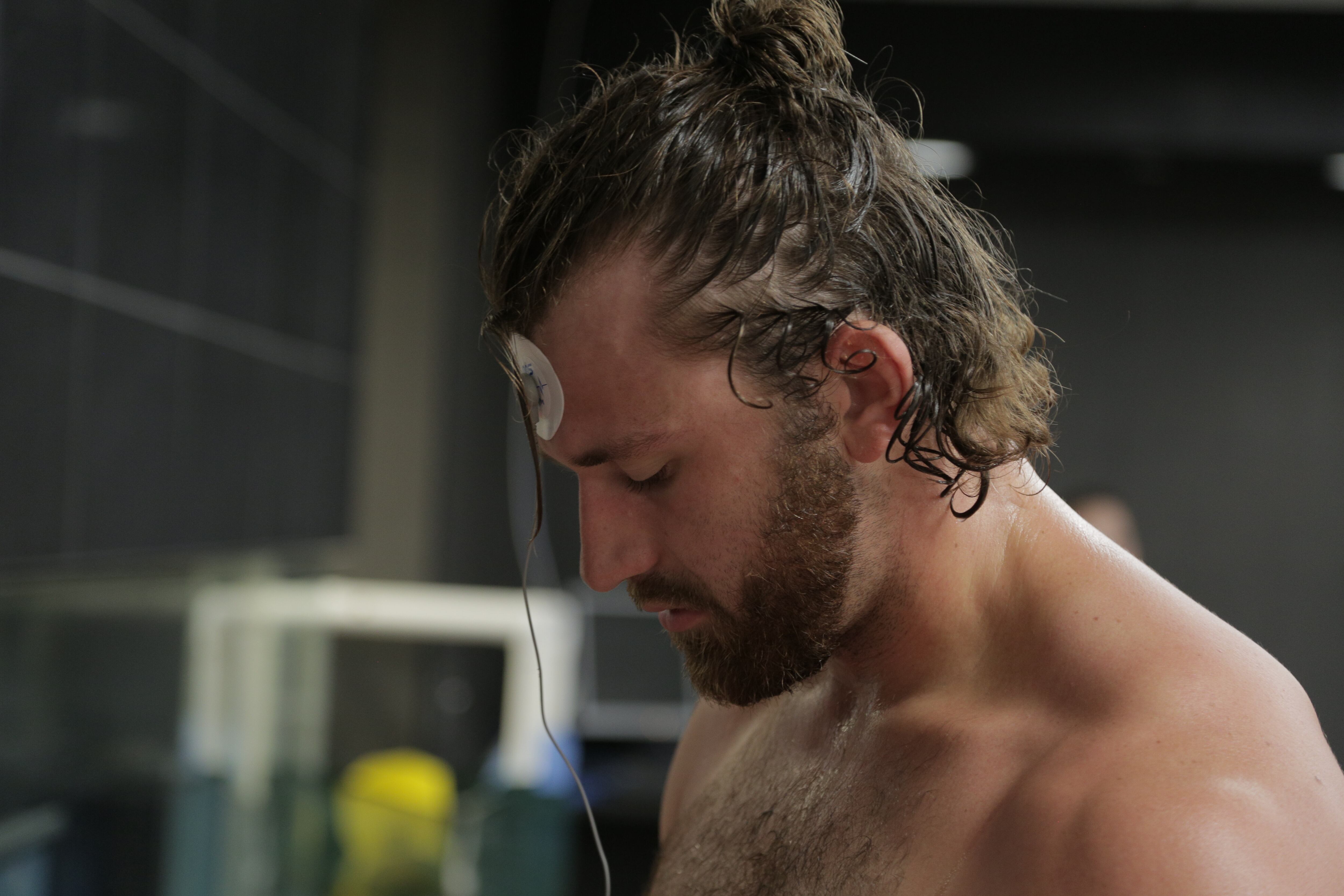The Air Force Research Lab is working on new techniques that could help special operations troops train and recover better and, ultimately, become better warfighters.
The 711th Human Performance Wing, part of the lab at Wright-Patterson Air Force Base in Ohio, is leading the effort, working with experts at Ohio State University.
Since the special operations population is scattered across the globe, researchers needed participants whose physical and mental attributes were similar to those troops — elite athletes.
So the 711th Wing partnered with Ohio State University to collect data from its football players based on real-time exertion, daily readiness and heart-rate variability technology.
Josh Hagen, program research lead at the 711th Wing, said the athletes wear compression shirts with electronics that measure their performance during practices.
"What it tells us is this is what your body went through on a Monday," Hagen said. "What I really care about is Tuesday morning when you wake up."
The team is also working on creating predictive analytics from past performances.
"Based on the data, we can predict how [special operations troops or athletes] are going to perform with 90 percent accuracy," he said.
Hagen said special operations troops and athletes are also similar in that they want to perform even if they're injured.
"They're not going to not train or not go on a mission, unless they're severely injured," he said. "How do I make you better in that context? It all comes down to recovery."
The data that's collected shows Hagen and his researchers how each individual reacts to the workload and how they should best recover based off of their specific physiology.

Ohio State linebacker Craig Fada performs a heart-rate variability and central nervous system test.
Photo Credit: Kyle McKee/Ohio State Athletics Communications
"Now we understand that if you're not in your optimum range for the day and it's 10 and you have to perform at 3, we know the things we can do to put you in that optimum part for that practice or mission," Hagen said.
A common recovery method with football players is jumping into an ice tub after the game, but Hagen said that's not always the best practice.
"There's little science to back up why we do that," he said. "I'm not saying it's a detriment, but there are times when, based on the recovery data, that's actually the worst thing you can do."
So the team looks for ways to personalize recovery in order to help each athlete or service member obtain optimal performance.
One of the more advanced recovery methods the 711th Wing and Ohio State University started testing is a float tank, where the person floats in a saltwater tank to relieve stress on joints and relax the mind.
Doug Calland, OSU's associate athletic director for sport performance, said there are a lot of products out there, and the Air Force researchers can help narrow down which are best.
"There's a lot of information we can measure, but what does it mean from a standpoint of how to apply it?" he said. "They do that very well."
The best practices that come out of the research partnership will be applied to elite military operators, Hagen said.
Hagen said being able to actually test different methods and technologies on athletes saves time and money when it comes to translating the techniques used on athletes to the military.
"We can make pretty quick decisions to save research dollars" since the hands-on study will provide concrete data for the future, he said.
Hagen and Calland said there are plans to expand the partnership beyond the football team and to the wrestling and lacrosse teams.
Charlsy Panzino covers the Guard and Reserve, training, technology, operations and features for Army Times and Air Force Times. Email her at cpanzino@militarytimes.com.
Charlsy is a Reporter and Engagement Manager for Military Times. Email her at cpanzino@militarytimes.com.




